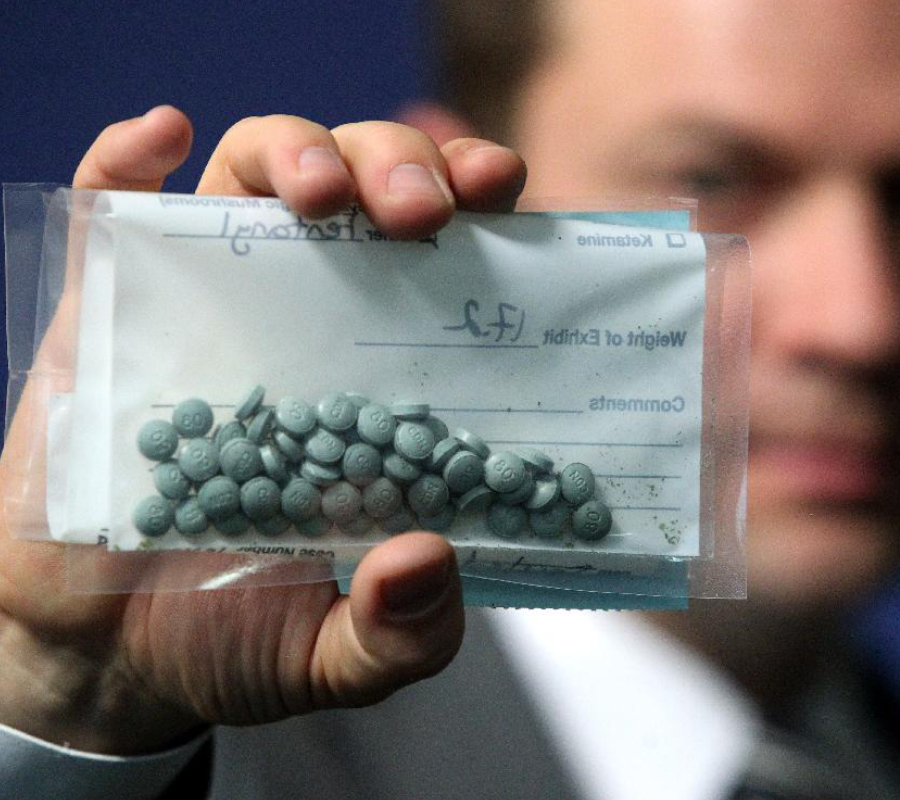Overdoses occasioned by illicitly-manufactured fentanyl have increased exponentially over the past few years in the United States.
The Centers for Disease Control and Prevention highlighted this concerning trend on the latest Morbidity and Mortality Weekly Report, as the distribution and production rates of non-regulated fentanyl has increased by the thousands. Fentanyl is an opioid that is 100 times stronger than morphine. It is available for the treatment of different types of pain, especially for cancer patients.

The facts on Fentanyl abuse
The drug is oftentimes mixed with heroin or sold in its place. The number of products confiscated by authorities that tested positive for fentanyl became four times higher from 2013 to 2014, whereas deaths involving opioid overdoses increased by 79 percent.
The CDC investigated opioid overdoses on 27 states known to have an elevated number of lethal cases. The states that were deemed as “high-burden” concerning the rates of fentanyl linked to overdoses were Ohio, Massachusetts, Maine, New Hampshire, North Carolina, Maryland, Florida, and Kentucky.

There also appears to be a critical increase in deaths related to fentanyl between 2013 and 2015 in Ohio and Florida, two states that share an increased fentanyl incidence in deaths, corresponding to 526 and 115 percent respectively. On the other hand, prescriptions involving fentanyl only increased by around 5 percent in these states from December 2014 to February 2015.
At least 33 overdoses with one fatality have been reported to authorities of Cincinnati, Ohio, since Tuesday. In these cases, fentanyl was administered mixed with heroin. This is also common for carfentanil, an elephant tranquilizer 10,000 times stronger than morphine commonly used to substitute illicit presentations of Oxycontin.
The report states that the increasing rates of illicitly manufactured fentanyl have contributed significantly to synthetic opioid deaths, mainly because fentanyl prescriptions have remained stable for most of the time. The most common clinically-available presentations of fentanyl are Fentora, Duragesic, Onsolis, Subsys, and Abstral.
Researchers attributed the spike in fatality rates to fentanyl’s high potency, which can be lethal minutes after it is ingested. Fentanyl can be applied through a skin patch, injection, nasal spray, intravenous, or as pills.
Although the CDC suggests that the number of deaths linked to opioids does not entirely reflect fentanyl’s incidence as a trending drug, it is to be considered a reference for the number of deaths involving fentanyl, which are tacitly present the rates of synthetic opioid deaths.
How Fentanyl affects the body
Fentanyl specifically acts upon the body’s ability to respond to pain, focusing on neural receptors located on the spinal cord and the brain. It is prescribed as a last resort, as patients are oftentimes prescribed oxycodone and morphine for the same ailments.
The drug is known to easily cause dependency, even in small and supervised amounts. Although dependency and addiction are different from each other, the craving of the drug is a psychological disorder that can lead to severe consequences. Fentanyl can cause drowsiness, fatigue, euphoria, and severe constipation.

The drug is known to cause impairments on the body’s regular functions. People are advised not to drive while under the effects of fentanyl and not to drink alcohol while under treatment.
The most common presentation of the illicitly-manufactured drug is that of a sublingual film that people dissolve in the inside of their mouth. Addicts can also smoke the solution contained in Fentanyl patches. It is possible to become addicted without abusing the prescription drug, but often people try to escape their daily responsibilities by taking fentanyl. At this point, the patient will have to undergo rehabilitation to regain their grasp on life.
“Persons recently released from an institution are at particularly high risk for opioid overdose because of lowered opioid tolerance resulting from abstinence during residential treatment or incarceration. Interventions such as provision of naloxone and continuation of medication-assisted treatment after release have been shown to be effective for this group,” reads the report from the CDC.
Addicts cannot make rational decisions, especially when faced with withdrawal symptoms. This is a trait shared by most opioids, which is why rehabilitation clinics administer naloxone to the patients to deal with withdrawal, a condition that takes a heavy toll on the person’s well-being.
But because fentanyl is 100 times stronger than morphine, a single dose of naloxone is often not enough to prevent a patient from overdosing. People are advised to call emergencies if they are in the presence of an opioid overdose, as naloxone alone may not save the person.
Opioid prescriptions appeared to be a main problem in the first instance, but the increased rate of fentanyl’s relation to opioid deaths indicate that it is an issue that goes far beyond the prescription drug controversy.
Physicians have been issuing new guidelines for prescribing opioids. They are also using national registers to stop patients from obtaining more than one prescription from a doctor, but there has to be an increased effort to reduce the incidence of fentanyl on the streets, as it appears to be fueling America’s opioid crisis.
Source: CDC
